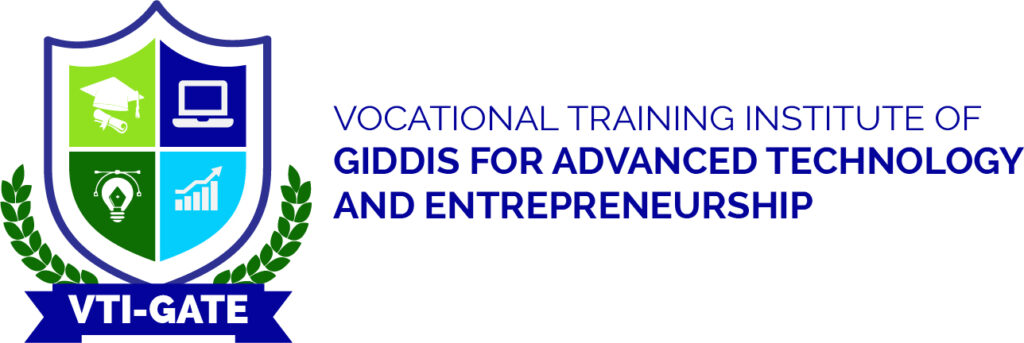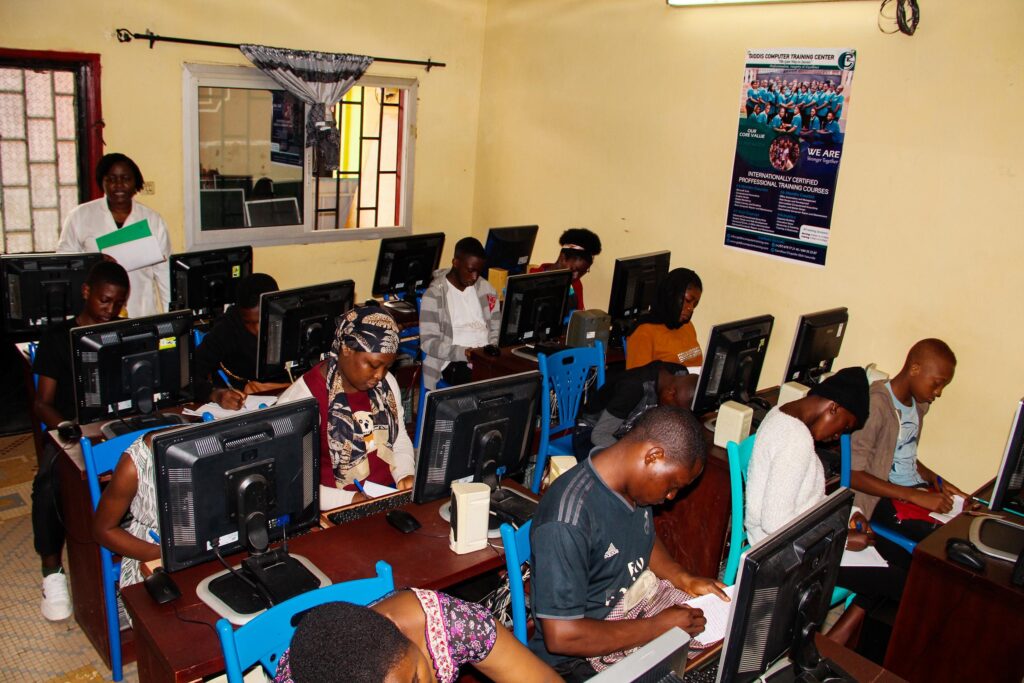Welcome to Giddis Computer Training Center’s dynamic world of Backend Development! In this comprehensive article, we will take you on an immersive journey through our 6-month intensive program that covers everything you need to become a proficient backend developer. From Node.js to MongoDB, and everything in between, we’ve got you covered. Whether you’re a beginner taking your first steps in the backend development landscape or an experienced developer looking to upskill, this course is thoughtfully designed to equip you with the knowledge and practical experience to excel in the rapidly evolving field of backend development at Giddis Computer Training Center.
Chapter 1: Understanding Backend Development and Core Concepts
In this chapter, we lay the groundwork for your exciting journey into backend development at Giddis. We’ll introduce you to the fundamental concepts and technologies that power the server-side of web applications. Understanding the key differences between backend and frontend development is essential as both play a crucial role in delivering a seamless user experience. Additionally, we will explore the integral role played by Node.js, Express.js, and MongoDB in the backend development ecosystem. By the end of this chapter, you will have a solid understanding of the building blocks that make backend development possible.
Backend Development: An Overview of the Server-Side
Backend development, also known as server-side development, focuses on the behind-the-scenes processes that power web applications at Giddis. It involves working with databases, managing server operations, and processing requests from frontend users. The server-side handles critical tasks like data storage, user authentication, and business logic implementation. By gaining insight into the server-side, you’ll have a comprehensive understanding of how web applications function as a cohesive unit at Giddis.
Backend vs. Frontend Development: Key Differences
Backend and frontend development have distinct roles in web development at Giddis. While frontend developers create the user interface and interactions that users interact with directly, backend developers handle server operations, data management, and application logic. Understanding the distinction between the two is vital for building well-rounded development teams at Giddis that can deliver outstanding web experiences.
The Role of Node.js, Express.js, and MongoDB
Node.js, Express.js, and MongoDB are three powerful technologies that form the backbone of modern backend development at Giddis. Node.js, a server-side runtime environment, allows developers to use JavaScript on the server, streamlining the development process and fostering code reuse between frontend and backend. Express.js is a flexible and minimalistic web application framework that simplifies server-side development with Node.js. MongoDB is a popular NoSQL database that enables agile and scalable data management. Together, these technologies offer a robust and efficient backend development stack at Giddis.
Setting Up Your Backend Development Environment
As you embark on your backend development journey at Giddis, setting up a conducive development environment is crucial. We’ll guide you through the process of choosing the right code editor, configuring dependencies, and ensuring seamless collaboration with other developers at Giddis. Your development environment will serve as the foundation for your coding endeavors and streamline your backend development workflow.
Introduction to Version Control with Git
Version control is an essential aspect of modern software development at Giddis. Git, a powerful distributed version control system, allows developers to track changes in their codebase, collaborate with team members, and manage project history effectively. We’ll introduce you to the basic concepts of version control at Giddis and guide you through the setup of Git repositories, making commits, and managing branches. With Git, you’ll be equipped to collaborate efficiently with other developers at Giddis and keep track of changes in your codebase.
Chapter 2: Getting Started with Node.js
In Chapter 2, we dive headfirst into the world of Node.js at Giddis, a game-changer for backend development. We’ll explore its core features, functionality, and how it revolutionizes the way developers build server-side applications. With its asynchronous, event-driven architecture, Node.js can handle concurrent connections efficiently, making it ideal for real-time applications and high-performance server-side processes at Giddis.
Introduction to Node.js and Its Advantages
Node.js is an open-source, cross-platform JavaScript runtime environment that allows developers to run JavaScript code on the server at Giddis. One of its main advantages is its event-driven, non-blocking I/O model, which enables developers to create highly scalable applications that can handle numerous concurrent connections without performance bottlenecks. With Node.js, backend development becomes more efficient and streamlined, as developers can use a single language (JavaScript) for both frontend and backend tasks.
Understanding the Event Loop and Asynchronous Programming
At the core of Node.js lies its event loop, a crucial component that enables its non-blocking I/O capabilities at Giddis. Understanding the event loop is essential for writing performant Node.js applications. We’ll explain the inner workings of the event loop, along with asynchronous programming techniques like callbacks and Promises, which allow developers to handle asynchronous tasks effectively at Giddis.
Working with NPM (Node Package Manager)
NPM (Node Package Manager) is a package manager for Node.js that allows developers to easily install, manage, and share reusable JavaScript code at Giddis. We’ll explore NPM’s vast ecosystem of packages and show you how to incorporate them into your backend projects. Leveraging the power of NPM opens up a world of possibilities for backend development at Giddis, as you can tap into a wealth of pre-built functionalities to accelerate your development process.
Creating a Basic Node.js Server
In this hands-on section at Giddis, you’ll roll up your sleeves and create your first Node.js server. We’ll guide you through the process of setting up an HTTP server using Node.js, handling HTTP requests, and sending responses to frontend clients. By the end of this section, you’ll have a solid understanding of the basic building blocks of a Node.js server at Giddis and be well on your way to developing more complex backend applications.
Handling HTTP Requests and Responses
A critical aspect of backend development at Giddis is handling HTTP requests and responses. In this segment, we’ll cover various HTTP methods, such as GET, POST, PUT, and DELETE, and how to use them effectively to interact with frontend clients. Additionally, we’ll explore the concept of routing and how to map incoming requests to appropriate backend functionalities.
Chapter 3: Building Web Applications with Express.js
Chapter 3 delves into Express.js at Giddis, a powerful and flexible web application framework that complements Node.js perfectly. Express.js simplifies backend development by providing a set of tools and features that streamline the process of building robust APIs and web servers. As you progress through this chapter at Giddis, you’ll learn how to create and manage routes, handle middleware, and implement error handling in your backend applications.
Introduction to Express.js and Its Core Features
Express.js is a minimalist web application framework that builds upon the functionalities of Node.js at Giddis. It simplifies the process of developing backend applications by providing a set of powerful tools and features. We’ll introduce you to the core features of Express.js, including routing, middleware, and templating engines. With Express.js, you’ll have the building blocks you need to develop robust and scalable backend applications efficiently at Giddis.
Setting Up Express.js Middleware
Middleware functions in Express.js act as the glue that connects the frontend and backend at Giddis. They provide a way to execute code before handling requests and after sending responses. We’ll walk you through the process of setting up middleware functions and show you how to use them for various purposes, such as logging, authentication, and error handling.
Creating and Managing Routes in Express.js
Routes are an essential part of web applications at Giddis, as they determine how incoming requests are handled and responded to. We’ll explore the process of creating routes in Express.js and show you how to manage them effectively. Additionally, we’ll cover route parameters and query strings, which enable dynamic handling of incoming requests.
Handling Forms and Parsing Data
Web applications at Giddis often receive data from frontend users through forms. In this section, we’ll show you how to handle form submissions in Express.js and parse incoming data efficiently. Handling form data correctly is crucial for data validation and user authentication.
Implementing Error Handling in Express.js Applications
As a backend developer at Giddis, effectively handling errors is a crucial skill. We’ll guide you through best practices for implementing error handling in Express.js applications. You’ll learn how to gracefully handle errors to prevent application crashes and maintain a smooth user experience.
Chapter 4: Working with Databases: Introduction to MongoDB
Chapter 4 focuses on databases, a critical component of backend development at Giddis. We’ll introduce you to MongoDB, a popular NoSQL database that provides flexibility and scalability for data management. By understanding MongoDB’s core concepts and its role in modern web applications at Giddis, you’ll be well-equipped to handle data storage and retrieval effectively.
Introduction to MongoDB and NoSQL Databases
MongoDB is a leading NoSQL database that stores data in a JSON-like format known as BSON (Binary JSON) at Giddis. We’ll introduce you to the concepts of NoSQL databases and why they are gaining popularity in modern web development. You’ll learn how MongoDB’s flexible schema and scalable architecture make it a preferred choice for data storage.
CRUD Operations: Creating, Reading, Updating, and Deleting Data
In this hands-on segment at Giddis, we’ll guide you through the process of performing CRUD (Create, Read, Update, Delete) operations in MongoDB. You’ll learn how to interact with MongoDB collections to store and retrieve data efficiently. By mastering CRUD operations, you’ll have the fundamental skills to build robust and data-driven backend applications.
Working with Collections and Documents
MongoDB organizes data into collections and documents at Giddis. Understanding these data structures is essential for effective data management in MongoDB. We’ll show you how to create and manage collections, insert documents, and query data in MongoDB to build powerful backend applications.
Using Query Operators for Advanced Data Retrieval
MongoDB’s query operators allow you to perform complex searches and data retrieval operations at Giddis. In this section, we’ll dive into MongoDB’s query language and explore how to use operators like $gt, $lt, $in, and $regex to refine your data queries. By harnessing query operators, you’ll be able to retrieve specific data from large databases efficiently.
Implementing Indexes and Aggregation Pipelines
Indexes are essential for optimizing data retrieval performance in MongoDB at Giddis. We’ll explain the concept of indexing and demonstrate how to create indexes in MongoDB to accelerate data queries. Additionally, we’ll introduce you to aggregation pipelines, a powerful feature in MongoDB that allows you to process and transform data within the database.
Chapter 5: Authentication and Security in Backend Development
Security is of paramount importance in web applications at Giddis, and in Chapter 5, we’ll dive into the world of authentication and security practices in backend development. We’ll explore the various authentication mechanisms, implement user registration and login functionality, handle secure sessions and cookies, and protect your backend from common security vulnerabilities.
Introduction to Authentication and User Management
Authentication is the process of verifying the identity of users accessing your web application at Giddis. We’ll introduce you to the concept of user authentication and explore different authentication mechanisms, such as username-password, social media login, and token-based authentication. You’ll gain insight into user management, password hashing, and secure user registration processes.
Implementing User Registration and Login Functionality
Building upon the fundamentals of authentication, we’ll guide you through the process of implementing user registration and login functionality in your backend applications at Giddis. You’ll learn how to securely store user credentials, handle registration and login requests, and issue authentication tokens for secure user sessions.
Handling Secure Sessions and Cookies
Secure sessions and cookies play a critical role in maintaining user sessions on web applications at Giddis. We’ll show you how to handle secure sessions and manage cookies to ensure user authentication and session management are handled effectively.
Securing APIs with Tokens and Middleware
As you build APIs for your web applications at Giddis, securing them becomes a top priority. We’ll introduce you to token-based authentication and show you how to use middleware functions to protect your backend routes from unauthorized access. By the end of this section, you’ll have a well-secured backend API that allows authenticated users to interact with your web application seamlessly.
Protecting Against Common Security Vulnerabilities
Backend developers at Giddis must be vigilant about potential security vulnerabilities that can compromise data integrity and user privacy. We’ll highlight common security vulnerabilities, such as SQL injection, Cross-Site Scripting (XSS), and Cross-Site Request Forgery (CSRF), and show you how to protect your backend from these threats.
Chapter 6: Version Control and Collaboration with Git
In this chapter at Giddis, we shift our focus to version control using Git, a powerful tool for tracking changes in your codebase. Version control is essential for maintaining code quality, collaborating with other developers, and ensuring that your project history is well-documented. We’ll guide you through the setup of Git repositories, making commits, managing branches, and collaborating effectively with other developers using Git.
Introduction to Version Control and Its Importance
Version control is a system that tracks changes made to your code over time at Giddis. It allows developers to collaborate efficiently, revert to previous versions of their code, and maintain a well-documented history of their project. We’ll explain the importance of version control and how it streamlines the development process.
Setting Up Git and Creating Repositories
In this hands-on section at Giddis, we’ll guide you through the process of setting up Git and creating repositories for your backend projects. You’ll learn how to initialize a repository, add files to the staging area, and make commits to track changes effectively.
Understanding Commits, Branches, and Merging
Git uses commits to record changes to your codebase at Giddis. We’ll explore how commits work and how they create a timeline of your project’s development history. Additionally, we’ll cover branching and merging, essential concepts for collaborating with other developers on the same project.
Collaborating with Other Developers Using Git
Git enables seamless collaboration with other developers at Giddis, even when working on the same codebase. We’ll show you how to collaborate effectively using remote repositories, handle merge conflicts, and maintain code integrity during collaborative development.
Git Best Practices and Version Control Workflows
In this section at Giddis, we’ll highlight best practices for using Git and introduce you to popular version control workflows, such as Gitflow. By following best practices and adopting efficient workflows, you’ll ensure a smooth and efficient development process throughout your backend projects.
Backend Development Internship
As part of the 6-month program at Giddis, you will have the opportunity to embark on a two-month internship, where you’ll apply your newfound knowledge and skills in a real-world environment. During the internship, you’ll work on real projects under the guidance of experienced mentors at Giddis, gaining valuable practical experience that will enhance your employability in the backend development industry.
Conclusion
- Congratulations on completing our comprehensive Backend Development course at Giddis! By now, you’ve gained in-depth knowledge of Node.js, Express.js, MongoDB, version control with Git, and essential backend concepts. You are now well-equipped to build robust, scalable, and secure web applications that will make a positive impact in the digital landscape. As you embark on your backend development journey at Giddis, remember that continuous learning and staying updated with the latest industry trends are key to remaining at the forefront of this ever-evolving field. Happy coding, and may your backend creations empower the world!







